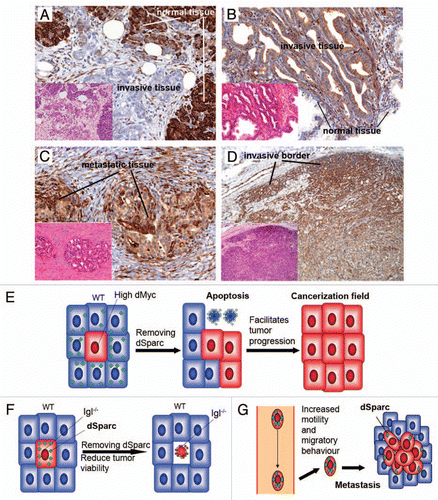Figures & data
Figure 1 Similarities in the role of Sparc between cell competition and human cancers. (A–D), Serial tissue sections were stained with H&E (small parts) and with immunohistochemistry for SPARC (brown). (A) represents pancreatic ductal adenocarcinoma showing decreased SPARC compared with the surrounding normal parenchima of the pancreas. (B) the opposite pattern of SPARC expression is evident: prostatic acinar adenocarcinoma is characterized by increased expression of SPARC and the surrounding normal glands have barely detectable levels. (C) Metastasis, to spermatic cord, of prostatic acinar adenocarcinoma shows even higher levels of SPARC. (D) cells located at the invasive borders of meningiomas are characterized by strong expression of SPARC, when compared to the remaining tumor cells. Original magnification for (A–C), ×200; for (D), ×100. (E) In a first type of tumors, supercompetitors expand by killing normal surrounding cells that in the absence of SPARC cannot defend themselves. This type of tumors may form cancerization fields. (F) A second type of tumors (lethal-giant-larvae like) may have fitness problems and activate SPARC that allows them to survive. (G) Metastatic cells may survive better in soil tissues protecting themselves from a foreign environment upregulating SPARC.
